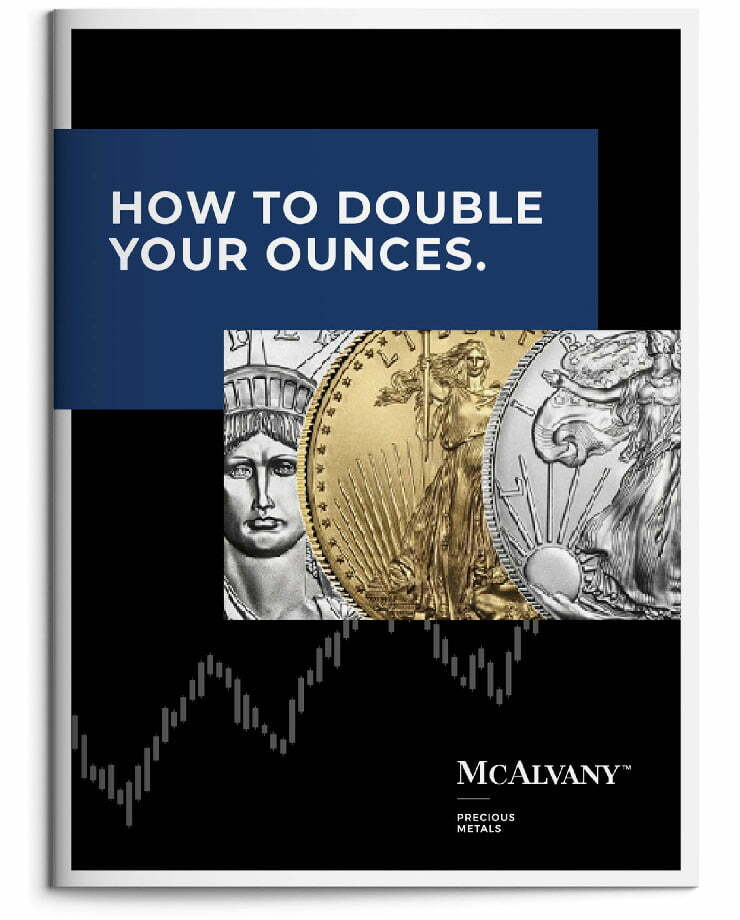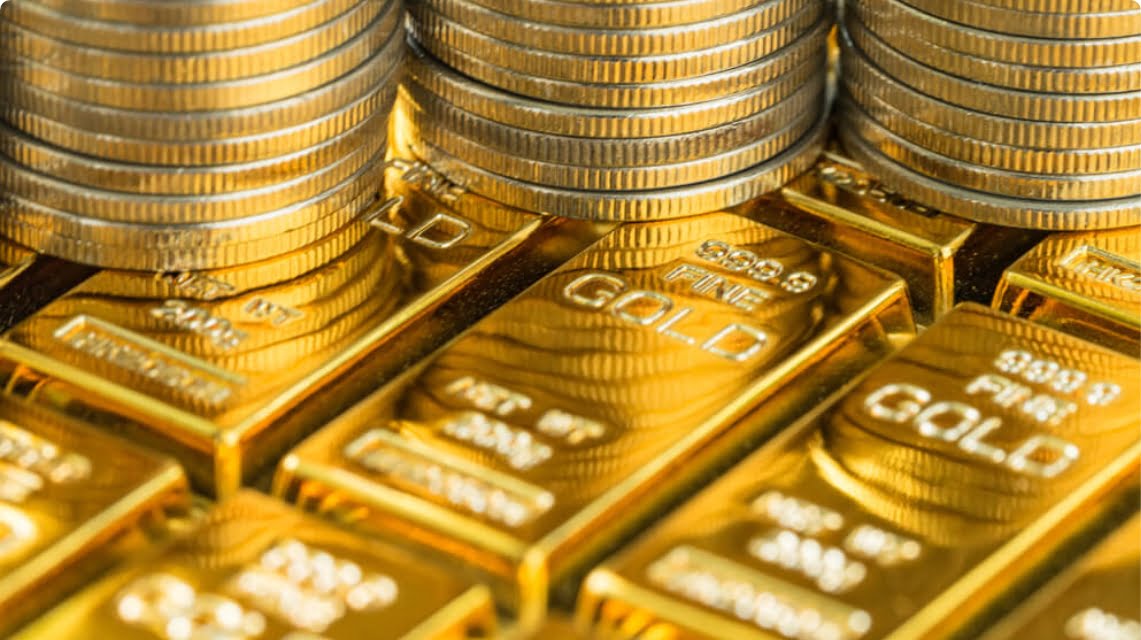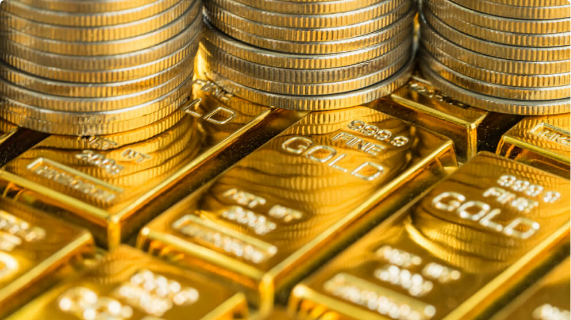To Correct, or Not to Correct?
While we await clarity on unfolding tariff trade war ramifications for the global economy and equity markets, let’s address the popular idea that gold must correct from its recent red-hot surge higher in price.
In short, yes, using history as a guide, gold should technically retrace some of the phenomenal gains it has registered since the March 2024 breakout from its prior $2,100/oz resistance level. In HAI‘s view, though, should is absolutely the key word in that statement.
While using history as a guide is always necessary, history hasn’t mapped this particular gold bull market’s territory yet. It is completely uncharted. Though we saw two prior gold bulls raging in the post-1971 global system, we have never before seen a gold bull market driven exclusively by record-setting levels of global central bank buying. That is exactly what we have so far in our ongoing bull market. This 235% trough-to-current-level move in gold since late 2015 is the central banks’ baby.
To demonstrate that fact empirically, let’s take a look at the following charts. The first displays the long-term percentage of global central bank reserves held in gold. The second chart is the actual gold price chart.
Look closely at the two charts and note how dissimilar they are from 1975–2008. Then note just how increasingly identical the two charts are afterward.
During the 2008 Great Financial Crisis (GFC), the United States attempted to ease a systemic debt crisis by counterintuitively injecting copious amounts of even more debt into the system. In response, the global official central bank sector understandably reacted by becoming net buyers of gold for the first time in decades. Importantly, post-GFC, U.S. policymakers have dramatically accelerated the country’s dire fiscal deterioration, weaponized the dollar, and most recently (with Trump 2.0) telegraphed a clear intention to weaken the dollar. Not surprisingly, global central bank gold buying has since accelerated to record levels.
In HAI‘s view, the increasingly strong correlation between these charts is concrete evidence that global central banks and their record gold demand have been setting the gold price over the last decade.
Crucially, in HAI‘s view, the fundamental drivers of that pivotal central bank gold demand look very firm. In fact, in HAI‘s view, the fundamental factors driving global central banks to continue to diversify out of dollar-denominated reserves and into a higher percentage of gold reserves currently look set to accelerate.
This week, HAI noted further confirmation of the strong global central bank motivation to press an accelerated dedollarization agenda from an unlikely source—Warren Buffet. In his final Berkshire Hathaway annual meeting before retirement, Buffet, a long-time gold sceptic, cast uncharacteristic doubt on the future strength of the U.S. dollar. Referring to his concerns over the problematic U.S. fiscal situation, Buffet said, “We have still had very substantial inflation in the United States, but it’s never been runaway…yet. And that’s not something we want to try and experiment with, because it feeds on itself. I wouldn’t want the job of trying to correct what’s going on in revenue and expenditures of the United States—with roughly a 7% gap, when probably a 3% gap is sustainable. And the further away you get from that, the more you get to where the uncontrollable begins… It’s a job I don’t want, but it’s a job I think should be done — and Congress does not seem good at doing it.”
Cryptically, regarding the specific implications to the dollar, Buffet added that the likelihood of further fiscal deterioration and the risk of accelerating inflation could “make us [Berkshire] want to own a lot of other currencies.”
In HAI‘s view, that’s as close as we’ll ever get to an overt “buy gold” recommendation from the famously anti-gold “Oracle of Omaha.”
A similar—and important—anti-dollar tone was also echoed this week far from Omaha. In an article titled, “How China is quietly diversifying from USTs,” the Financial Times reported that, “in Chinese academic and policy circles, it is the suggestion of a selective US default that is most alarming—and some influential scholars are now advocating a move towards outright de-dollarisation, rather than gradual adjustments to the mix of dollar-denominated assets. A range of proposals aimed at achieving this has been floated in recent months.”
The FT continued, “They [moves toward dedollarization] include boosting holdings of sovereign debt from other advanced economies… [but] currency diversification and larger gold purchases are also gaining traction.”
In HAI‘s view, while the FT and Chinese sources are importantly hinting at the accelerated adoption of gold (rather than U.S. Treasuries) as primary reserve asset, they are significantly understating dedollarization reality. No national currency anywhere in the world is in a position to take over the dollar’s reserve currency role. It’s inescapable: dedollarization de facto means re-goldification. Nothing short.
As Zerlina Zeng, senior director and chief Asia credit strategist at CreditSights, says in the FT article, “From a risk-hedging standpoint, currencies like the Swiss franc and Japanese yen are often considered safe havens… [but it] makes more sense for China to increase its gold holdings.” HAI wholeheartedly agrees.
Now, let’s return to our original question—should currently overbought gold correct? As stated earlier: yes, by the old rules, it should. But it’s critical to reemphasize: HAI sees overwhelming evidence that global central bank gold buying—the demonstrated driver of the gold price for the past 17 years—will continue, if not likely accelerate further.
That said, we have never seen a post-1971 gold bull like this one. Global central banks do not trade like the Western investor. The banks are largely price insensitive buyers currently driven by a structural mandate to dedollarize.
So far, the Western investor (a powerful force when engaged, which alone drove the prior two gold bull markets) hasn’t even joined the gold party yet! In HAI‘s view, this is what makes the current gold set-up so fascinating. The central bank gold bull is clearly ongoing, and perhaps even accelerating. However, the Western investor represents an entirely separate potential secondary bull market maker—and it’s only now beginning to piece together why central banks are buying gold so insatiably!
In HAI‘s view, all of this means that the typical corrections of past bull markets may well be shorter and shallower this time. However, anticipating a potential correction (and it’s size and duration) is an extremely tough call. We could continue to new highs imminently or, alternatively, we could certainly suffer a multi-month correction. Neither would surprise. What’s far easier to forecast is that gold and the gold mining stocks are very likely to be much higher in price if one looks downfield and gives the bull market a year or so to play out.
After all, as market wisdom reminds, “bull market’s surprise to the upside.” In HAI‘s view, this is a powerful, still young, catalyst-rich, generational bull market that is not to be missed.
Weekly performance: The S&P 500 was down 0.47%. Gold was up 2.62%, silver gained 2.21%, platinum was up 3.70%, and palladium was up 2.68. The HUI gold miners index gained 6.23%. The IFRA iShares US Infrastructure ETF was up 0.86%. Energy commodities were volatile and higher on the week. WTI crude oil was up 4.75%, while natural gas gained 4.33%. The CRB Commodity Index was up 1.66%. Copper was down 0.87%. The Dow Jones US Specialty Real Estate Investment Trust Index was down 0.60%. The Vanguard Utilities ETF was up 0.51%. The dollar index was up 0.31% to close the week at 100.34. The yield on the 10-yr U.S. Treasury was up 7 bps to close at 4.39%.
Have a wonderful weekend!
Best Regards,
Morgan Lewis
Investment Strategist & Co-Portfolio Manager
MWM LLC















